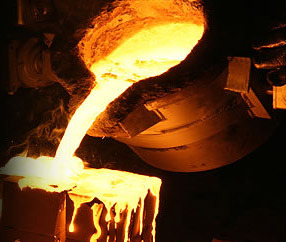Japanese Swords: 101- “Not Every Sword Is A Katana”
Through no fault of anyone in particular, except for rumor and natural progression, terms for various items have become commonplace. Whether a word was used among family and friends, because it’s just easier to say the wrong word, or because modern marketing has us trained to their vocabulary, we frequently assign a ‘name’ to things which simply aren’t true, or use a word so frequently it loses its impact and intention (called Semantic Satiation, by the way). Example: “Buffalo Wings” are not Buffalo’s wings, they are chicken wings, right? Such is the case with “Katana”. It is my hope that we may find a few new words to help uphold the diversity that in weapon-making, identifying, and using. So without further adieu, a quick list to what Japanese swords are actually called, and a spot-check way to tell them apart. *
There are three main divisions, usually, although there are deeper designations the further one gets into collecting, but for a good base, there are primarily: Tanto, Wakizashi, and Katana. Read More… (more…)
For The Love Of Locomotives…
Trains…they stir up visions of progress, travel, and even Christmas. Everyone has seen one in their lifetime, and people worldwide hold a reverent and sentimental place for what is probably one of the most iconic creations of the 18th century.
It was 1765 when James Watts invented the steam engine, and nearly a half century later, in 1804, Richard Trevithick took Watts’ idea, and applied it to mass transport, developing the first steam powered locomotive. However it wasn’t for almost another century (60+ years) that the idea to scale down and make “models” of trains was developed.
Since then model trains have become a niche attraction point for people of all ages. For some, “backyard” train sets, large enough to seat people, but small enough to not be considered a commercial operation are a lifetime work in progress, with pieces of track, and scaled down monuments added whenever the “conductor’s” budget allows. Fortunately for these hobbyists, there are companies that specialize in this, and whose sole purpose is to help keep the dream of owning one’s own train alive and chugging along (Come on…one train pun is okay, right?). (Read On…) (more…)
The Chemistry Of A Knife Collection
-
the branch of science and technology concerned with the properties of metals and their production and purification.
To the untrained eye, going “knife shopping” might be something that might seem banal, or even a remedial task at best. If you’ve seen one, you’ve seen them all, and they all look the same. (Don’t let them hear you say that, however… they are after all, knives.) However, a brief look deeper might be able to convince even the least “sharp” friend you’ve got that knife research is super important, and that researching the choice of knife might pay its initial investment in blades….. er, spades. It should be noted that the author has a distinct fondness for bladed weaponry/utility and might be very excited about this topic. It should also be noted that this particular piece is in regard to Steel Knife composition as opposed to other archaic metals which might have different rules entirely. Indeed we have come a long way from the Obsidian, Ivory and other bone compositions of Native American Indian tribes and/ or post-Roman Iron. Read on… (more…)





